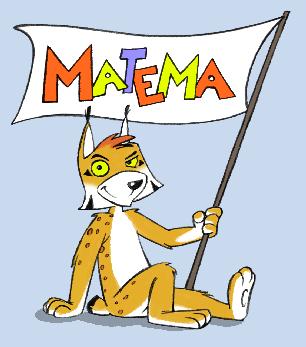Matthias Ehrhardt und Mai Huong Nguyen
Chaos in Liebesaffären
Ziehen sich Gegensätze an?
|
 |
Materialien für Interessierte zum Vortrag
Die Zielgruppe sind Schüler ab der 11. Klasse.
|
 |
|

Das MATEMA-Logo (ein Luchs, copyright by Ulf Grenzer)
Beschreibung
Wir werden das Auf und Ab in Liebesbeziehungen mit einem zeitverzögerten
System von nichtlinearen Differentialgleichungen modellieren.
Dabei werden wir u.a. die Frage beantworten, ob sich Gegensätze anziehen,
wann Chaos auftreten kann (und wie das zu interpretieren ist)
und wann global stabile Lösungen existieren;
wie z.B. ist ein Verzweigungspunkt der Liebe-Hass Kurve zu deuten?
Zur numerischen Lösung setzen wir die Software MAPLE ein.
Bemerkung
Dieser Vortrag enstammt dem
Modellierungsseminar: Mathematik löst praktische Probleme
im WS07/08 an der TU Berlin

Referenzen für den Vortrag
- K. Barley, A. Cherif,
Stochastic nonlinear dynamics of interpersonal and romantic relationships,
Appl. Math. Comput. 217 (2011), 6273-6281.
- N. Bielczyka, M. Bodnarb, U. Forys,
Delay can stabilize: Love affairs dynamics,
Appl. Math. Comput. 219 (2012), 3923-3937.
- F. Breitenecker, F. Judex, N. Popper, K. Breitenecker, A. Mathe, A. Mathe,
Love emotions between laura and petrarch - an approach by mathematics and system dynamics,
J. Comput. Inform. Technol. 4 (2008), 255-269.
- E. Buder,
A nonlinear dynamic model of social interaction,
Commun. Res. 18 (1991), 174-198.
- G. Feichtinger, S. Jürgensen, A.J. Novak,
Petrarcha's Canzoniere: rational addiction and amorous cycles,
J. Math. Soc. 23 (1999), 225-240.
- J.M. Gottman, J.D. Murray, C.C Swanson, R. Tyson und K.R. Swanson,
The mathematics of marriage, Cambridge, MA: MIT Press, 2002.
- A. Gragnani, S. Rinaldi, G. Feichtinger,
Cyclic dynamics in romantic relationships,
Int. J. Bifurcat. Chaos 7 (1997), 2611-2619.
- F.J. Jones,
The structure of Petrarch's Canzoniere,
Cambridge: Brewer, 1995.
- X. Liao, J. Ran,
Hopf bifurcation in love dynamical models with nonlinear couples and time delays,
Chaos Solitons Fract. 31 (2007), 853-865.
- L. Liebovitch, V. Naudot, R. Vallacher, A. Nowak, L.-B. Wrzosinska, P. Coleman,
Dynamics of two-actor cooperation-conflict models,
Physica A 387 (2008), 6360-6378.
- K. Mogielski, T. Platkowski,
A mechanism of dynamical interactions for two-person social dilemmas,
J. Theor. Biol. 260 (2009), 145-150.
- M.J. Radzicki,
Dyadic processes, tempestuous relationships, and system dynamics,
System Dynamics Review 9 (1993), 79-94.
- A. Rapoport,
Fights, games and debates,
Ann Arbor: University of Michigan Press, 1960.
- J.-M. Rey,
A mathematical model of sentimental dynamics accounting for marital dissolution,
PLoS ONE 5 (2010), e9881.
- S. Rinaldi,
Love dynamics: the case of linear couples,
Applied Mathematics and Computation 95 (1998), 181-192.
- S. Rinaldi,
Laura and Petrarch: An intriguing case of cyclical love dynamics,
SIAM Journal on Applied Mathematics 58 (1998), 1205-1221.
- S. Rinaldi und A. Gragnani,
Love dynamics between secure individuals: A modeling approach,
Nonlinear Dynamics, Psychology, and Life Sciences 2 (1998), 283-301.
- S. Rinaldi, F.D. Rossa, F. Dercole,
Love and appeal in standard couples,
Int. J. Bifurcat. Chaos 20 (2010), 2443-2451.
- E. Scharfe, K. Bartholomew,
Reliability and stability of adult attachment patterns,
Personal Relationships 1 (1994), 23-43.
- J.C. Sprott,
Chaos and time-series analysis,
Oxford University Press, 2003.
- J.C. Sprott,
Dynamical Models of Love,
Nonlinear Dynamics, Psychology, and Life Sciences, 8 (2004), 303-313.
- R.J. Sternberg,
The triangular theory of love,
Psychological Review 93 (1986), 119-135.
- R.J. Sternberg, M.L. Barnes (Eds.),
The psychology of love,
Yale University Press, 1988.
- S.H. Strogatz,
Nonlinear dynamics and chaos: With applications to physics, biology, chemistry, and engineering,
Reading, MA: AddisonWesley, 1994.
- J. Wauera, D. Schwarzera, G. Caib, Y. Lin,
Dynamical models of love with time-varying fluctuations,
Appl. Math. Comput. 188 (2007), 1535-1548.
PS: Spieltheoretische Seite von Liebesbeziehungen





